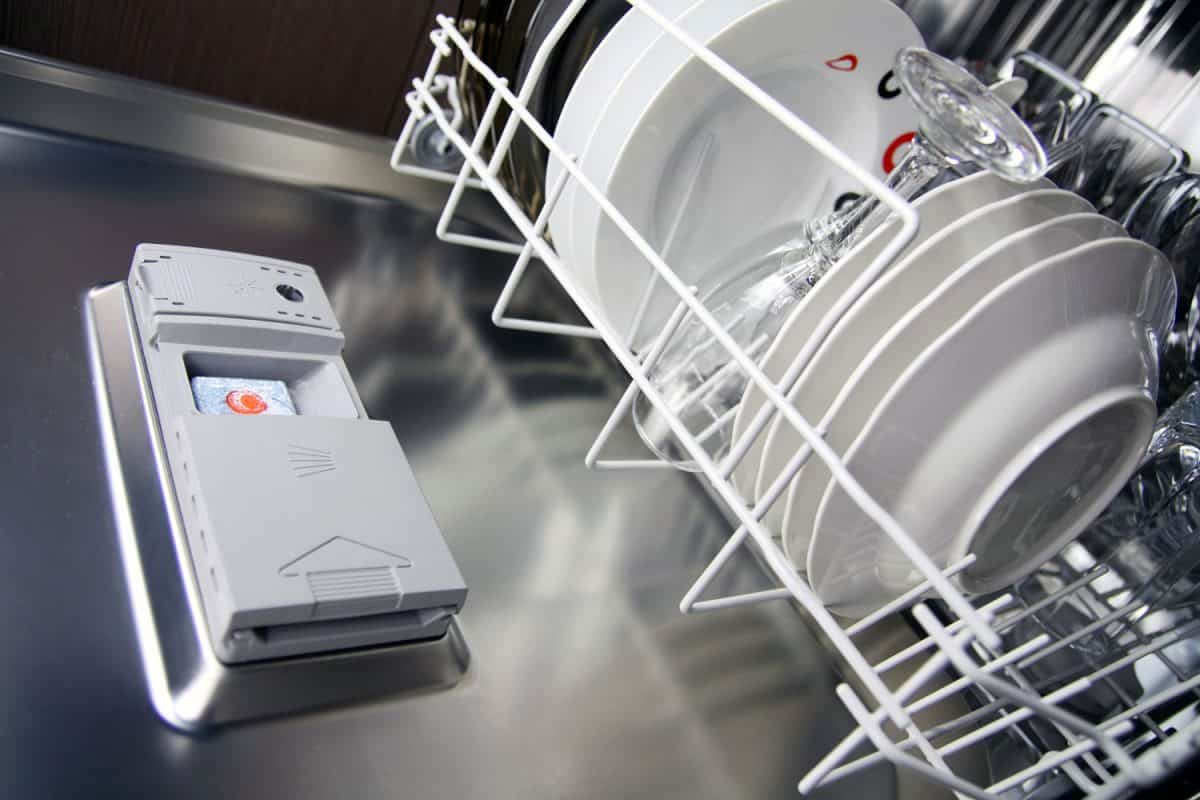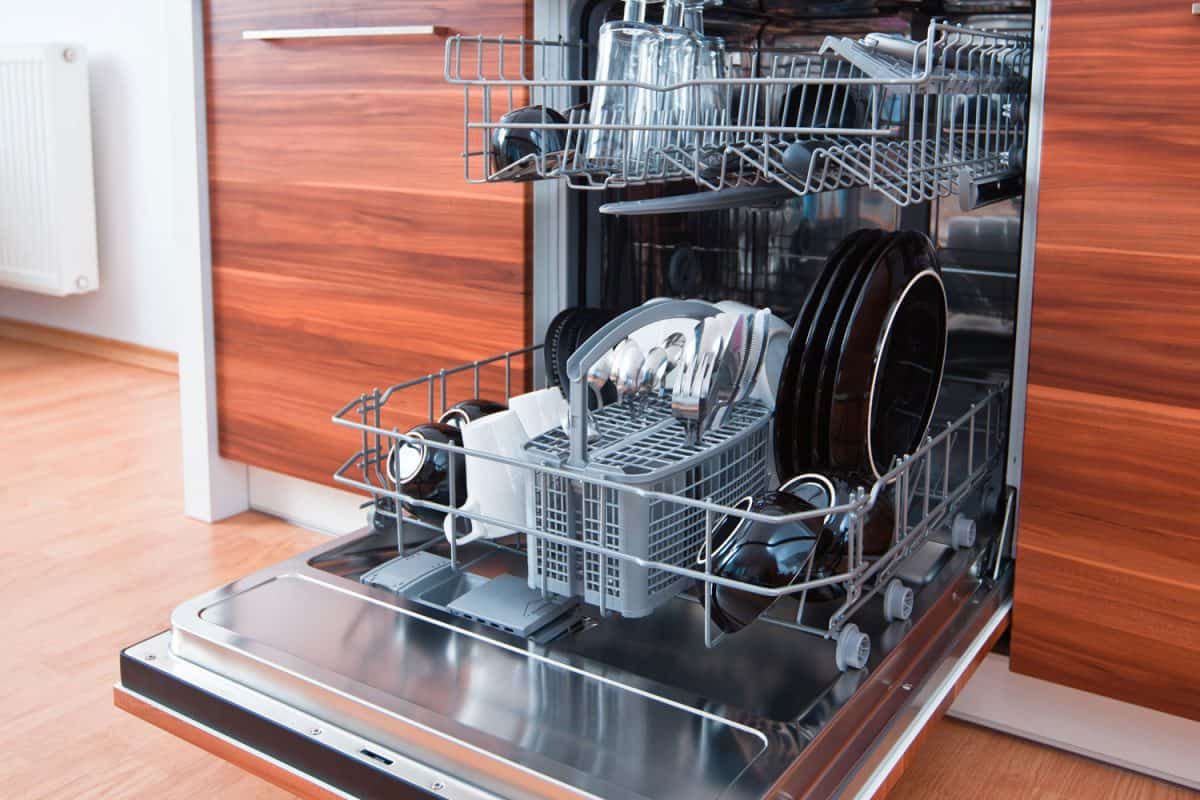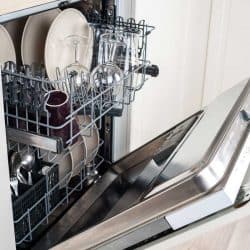Dishwashers are an essential appliance for maintaining functionality in the modern home kitchen via providing peace of mind for continually having sanitized dishes stocked in your cabinets. If you are considering purchasing a new Amana dishwasher, you probably have wondered how long it takes to run a normal cycle. We've researched this and have discovered well-researched information to share with you!
On average, the time required for running an Amana dishwasher cycle is between 1.5 to 4 hours. The allotment of time will vary based on the dishwasher model, dish detergent, filth, wash cycle, and sanitation options.
Perhaps your Amana dishwasher is running longer than you expected, and you are wondering if this is normal or a reason to call a repair technician. Maybe you are curious which cycle setting is the best for your dishwasher? These are great questions. Please continue reading; we have the answers to share with you!

How long do the Amana dishwashers cycles run?
The Amana dishwasher's time allotment per cycle does vary depending on which cycle was selected and the type of cookware washed. Suppose you would like to use the shortest cycle for a quick load of lightly soiled dishes. Choose the one-hour cycle that will quickly wash your dishes and provide a shortened drying time.
The normal cycle generally requires two to four hours to wash and dry the dishes thoroughly. The dishwasher will pause two to three times during one normal cycle for thermal holds and temperature regulations.
The cycle will require nearly four hours if you add the sanitation setting because the appliance must heat the water to high temperatures to kill harmful bacterias and germs.
For loads of extremely soiled dishes choosing the heavy setting is a wise option. The Amana dishwasher heavy wash setting will run between two and four hours.
If your Amana dishwasher is equipped with an optical sensor, it will monitor the dish detergent, internal temperatures, filth, and the dishes' progress. If it senses the dishes are still dirty, it will adjust its techniques and run for the entire four hours.
Amana dishwasher features and recommendations
Moreover, the cycles are extended when additional features are added, or the dishwashers' sensors detract stubborn stains or dried food particles that will require soaking. Another reason why the cycles could run up to four hours is the appliance pauses temporarily to allow the dishes to soak with dish detergent.
While the dishes are soaking, the dishwasher will heat the water to the correct temperature for the cycle. Then, it will resume washing, rinsing, and lastly, drying the dishes.
The Amana company recommends running the hot water in the kitchen sink before starting the load, allowing the hot water to flow directly from your water heater through the waterline into the dishwasher. By doing so, you will reduce the cycle's running time because the dishwasher isn't heating all of the water independently.
How much water does an Amana dishwasher use?
According to Energy Star, the Amana dishwasher utilizes 3.5 gallons of water per cycle. Please note that these calculations were based on research conducted by the US Department of Energy via the DOE test. Moreover, the water usage could vary depending on the model, wash cycles, and how soiled the dishes were.
Dishwashers are fantastic for busy cooks to keep up with the endless stream of dishes that follow any excellent cook. But have you wondered how your dishwasher works when the soap is dispensed? Read "When Does The Soap Dispenser Open In A Dishwasher?"
Is it normal for a dishwasher to run for 3 hours?
Yes, dishwashers can run up to four hours on a normal or heavy cycle. However, a dishwasher running three to four hours is a lengthy amount of time for an appliance to run. The reason why newer dishwashers are taking more time than previous models is primarily due to new appliance manufacturer regulations.
The federal energy standards and the Energy Star programs require rigorous appliance testing with energy and water usage regulations that must be upheld for the dishwasher to be viable for distribution to the public.
The energy-efficient dishwasher models have longer cycles because recycling water and reducing the wattage per cycle requires significantly more time to complete.
For example, running the dishwasher longer is comparable to driving a car slower. The process will take more time, but the energy savings are worth it for the planet and your pocketbook.
Are you interested in learning more about dishwashers and how long each cycle takes to complete? Read "How Long Does A Dishwasher Run?"
What is the best setting for a dishwasher?
There isn't one setting that is necessarily the best setting for a dishwasher. Instead, select the best cycle for the type of cookware, filth, and sanitation requirements your kitchen requires. Suppose you are unsure which cycle to select? Choosing the normal cycle is your best option because the normal cycle is considered an all-purpose dishwasher setting.
Although, dishwashers do vary based on make and model. Most do have comparable cycles settings, combined with a few features unique to the brand. But nearly all dishwasher models have light, normal, and heavy wash cycles that will do the job correctly.
Regardless of the dishwasher's brand, please select the cycle based on what you are washing. For example, you have several dirty pans and pots with a lot of dried-on food particles. For the best results, choose the heavy setting and add sanitation if needed.
Another great way to better understand your dishwasher's cycles is to read the user's manual or visit the manufacturers' website for further information. Because utilizing your dishwasher to your best advantage is paramount for successful appliance ownership and the cleanest dishes possible in your kitchen cabinets.

What is the 1-hour cycle on the Amana dishwasher?
According to Amana, the one-hour cycle is the quick wash cycle. This cycle is the best option if your dishes are lightly used items like water glasses. Also, the one-hour cycle significantly reduces the drying time, and the dishwasher will not be running at its optimal energy-saving modes.
Suppose your household has a goal for reducing energy usage—this is not the cycle to select for energy-saving purposes.
Moreover, if you have dishes with dried-on foods, molds, or someone in your household is immunocompromised. Do not choose this setting. The dishwasher will not have ample time to clean or sanitize the load thoroughly. Instead, select the normal or heavy setting and add the sanitation feature for the best results.
Suppose you are going on a several-month sabbatical, and you are wondering if your dishwasher will have issues from lack of use. Read "Do Dishwashers Break If Not Used?"
Additional thoughts
Using a dishwasher can be an excellent time-saving investment for your home that will ensure that your dishes are sanitized after each use. The added peace of mind that your dishes are as clean as possible is paramount during a global pandemic.
Providing your dishwasher with regular maintenance will help extend its lifespan, protect your investment, and ensure that you continue to have clean dishes in your kitchen.
In closing

Dishwashers are a great addition to your kitchen that will help you wash your dishes efficiently for your household. We certainly hope this article has helped you gain clarity around the topic of dishwasher cycles and water usage statistics. Please visit Kitchenseer.com soon for more interesting and helpful content!
We know you are interested in reading more informative articles. Please be sure to check out some of our other posts before you go to help further your knowledge base regarding residential dishwashers!
How Heavy Is A Residential Dishwasher?
Should You Keep A Dishwasher Door Open When You're Away?
Do Freestanding Dishwashers Need To Be Plumbed In?



![Man's hand taking out a dishwasher filter, Do Amana Dishwashers Have Filters [And How To Clean Them]](https://kitchenseer.com/wp-content/uploads/2021/11/Mans-hand-taking-out-a-dishwasher-filter-Do-Amana-Dishwashers-Have-Filters-And-How-To-Clean-Them-250x250.png)
![Clean dishes in a dishwasher machine after washing cycle, How Long Should A GE Dishwasher Run? [Inc. On Normal]](https://kitchenseer.com/wp-content/uploads/2022/03/Clean-dishes-in-dishwasher-machine-after-washing-cycle-250x250.jpg)
![A Whirlpool dishwasher at a store, How Long Is Whirlpool Dishwasher Cycle? [Inc. Normal]](https://kitchenseer.com/wp-content/uploads/2022/07/A-Whirlpool-dishwasher-at-a-store-250x250.jpg)
